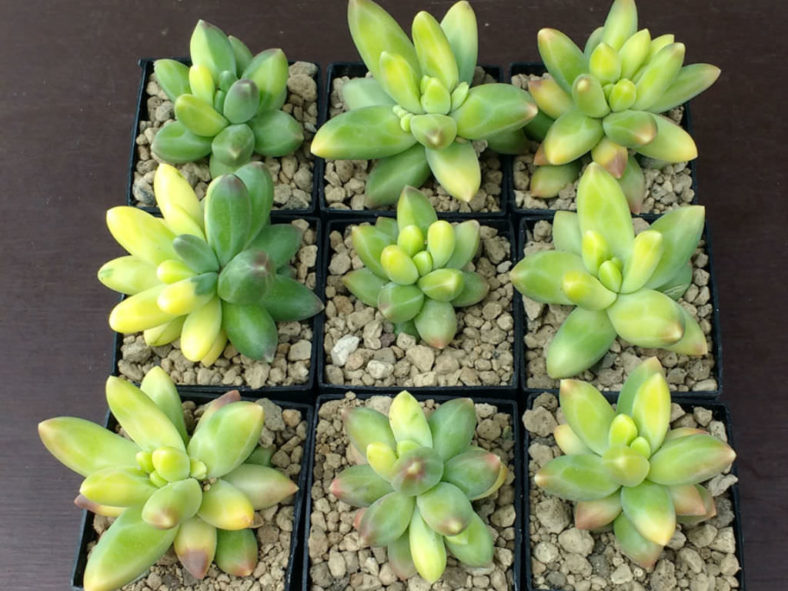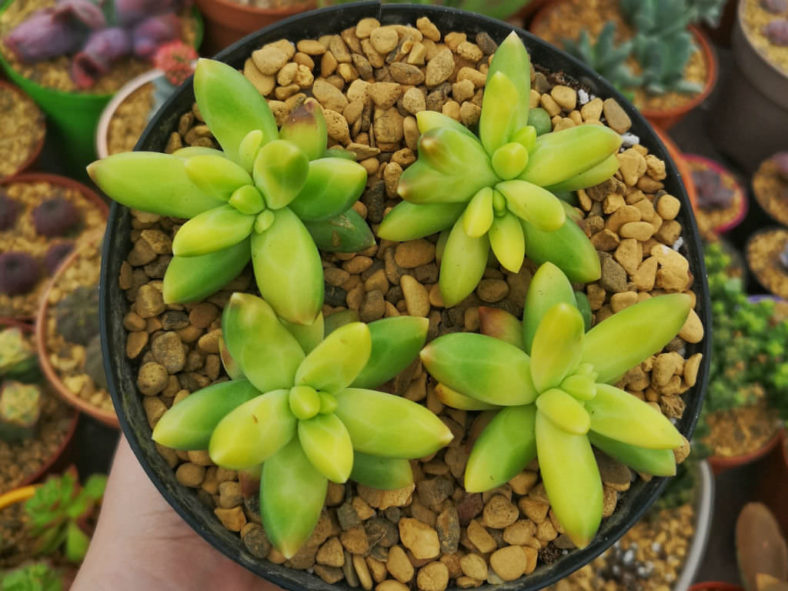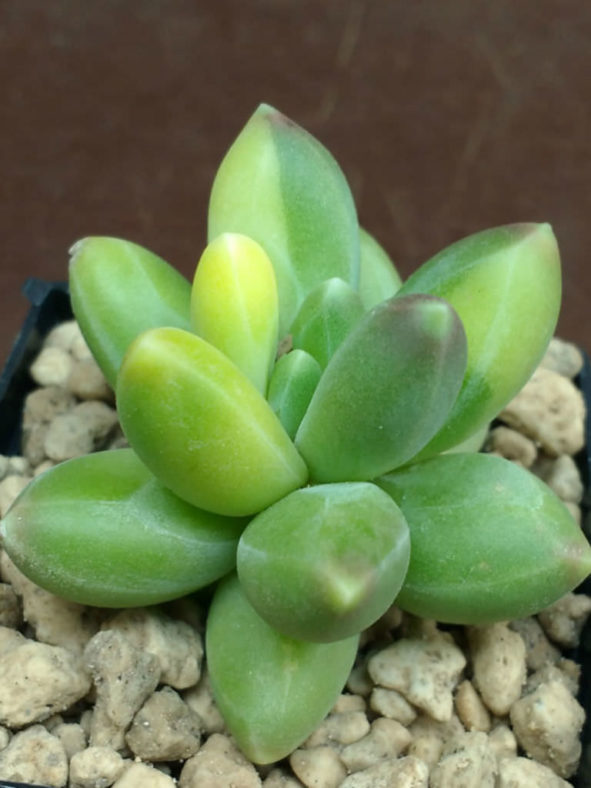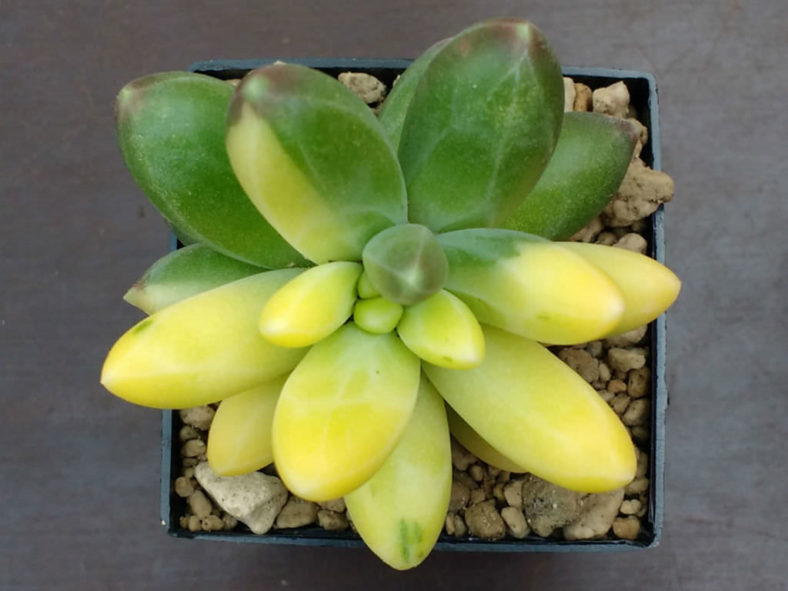Scientific Name
Pachyphytum compactum 'Variegatum'
Accepted Scientific Name
Pachyphytum compactum Rose
Synonym(s)
Pachyphytum compactum f. variegatum
Scientific Classification
Family: Crassulaceae
Subfamily: Sedoideae
Tribe: Sedeae
Subtribe: Sedinae
Genus: Pachyphytum
Origin
Pachyphytum compactum 'Variegatum' is a form of Pachyphytum compactum selected for its variegated foliage.
Description
Pachyphytum compactum 'Variegatum' is an attractive small succulent with short, stout, often basally branched stems that hold compact rosettes of variegated and distinctively patterned leaves. The stems can grow up to 6 inches (15 cm) long, usually upright or bend to the ground and lose their lower leaves. The leaves are light green to grey-white with irregular cream and yellow markings, heavy white veins, and deep purple tips when gently stressed by intense sunlight or cool temperatures.

Hardiness
USDA hardiness zones 9a to 11b: from 20 °F (−6.7 °C) to 50 °F (+10 °C).
How to Grow and Care
Pachyphytums do not tolerate frosts well. Temperatures below 20 °F (-6 °C) will kill the plants, and temperatures that may go below 45 °F (7 °C) during an extended period should be avoided. It tolerates high heat and intense sunlight. As with most succulents from the Crassulaceae family, Pachyphytum can tolerate (and even appreciate) poor soil conditions so long as it is well-draining. It can thrive in full or partial sunlight.
Allow the soil to dry out before watering, and avoid getting water on the leaves. The plants will require more water in winter as winter begins its active growth season. If you are unsure when to water your plant, watch the lowermost leaves for signs of drying and water them then. Pachyphytum is far more likely to survive under-watering than overwatering. The thick, fleshy leaves will appear wilted and slightly "under-full" when they need water.
One of the most common pests to houseplants is the mealybug, and your Pachyphytum may fall prey to this pest. The symptoms of a mealybug infestation are slowed or stopped growth (though in summer, this is a normal sign of dormancy). If this occurs without apparent cause, remove the plant from the pot and examine the roots or look at the leaf-stem junctions.
Learn more at How to Grow and Care for Pachyphytum.
Links
- Back to genus Pachyphytum
- Succupedia: Browse succulents by Scientific Name, Common Name, Genus, Family, USDA Hardiness Zone, Origin, or cacti by Genus
Photo Gallery
Click on a photo to see a larger version.


